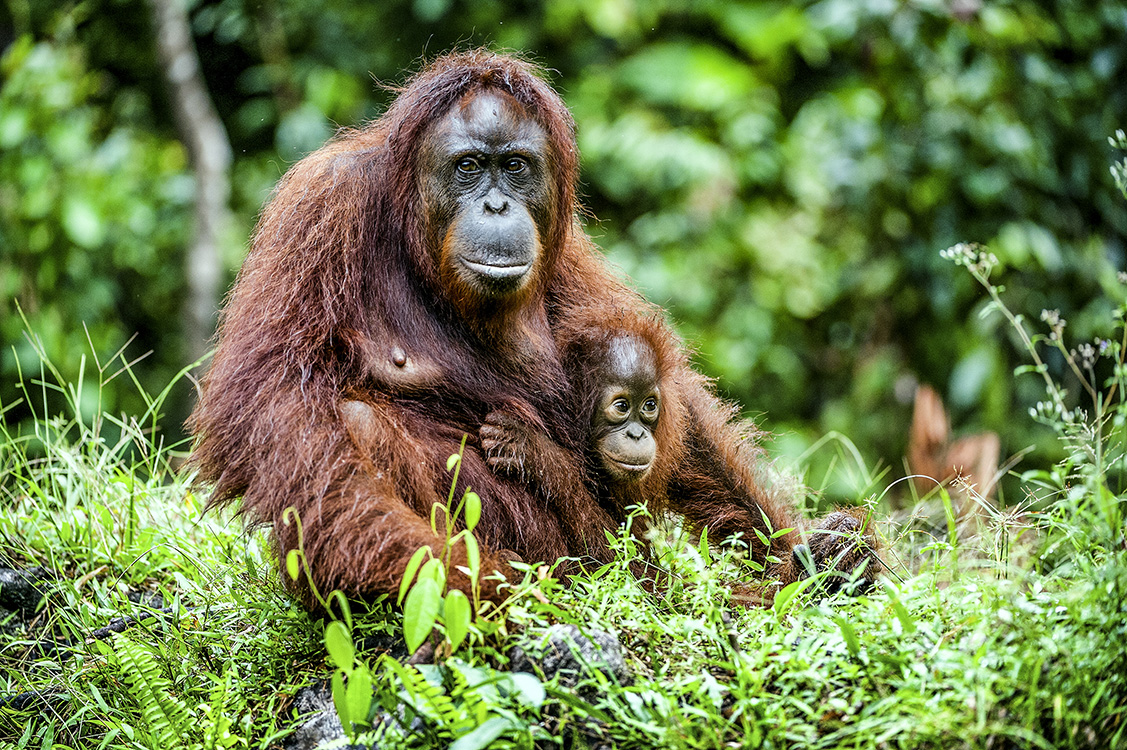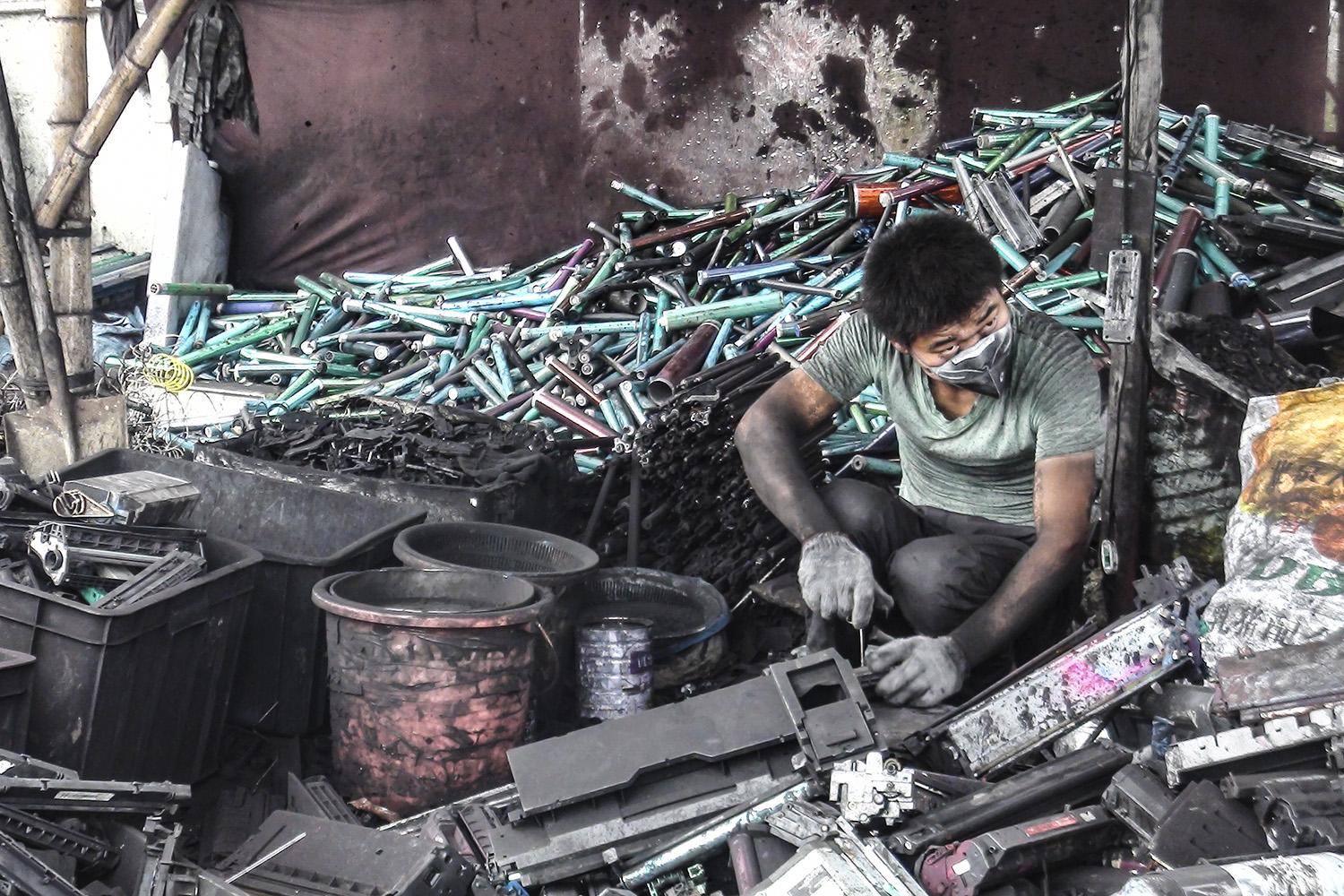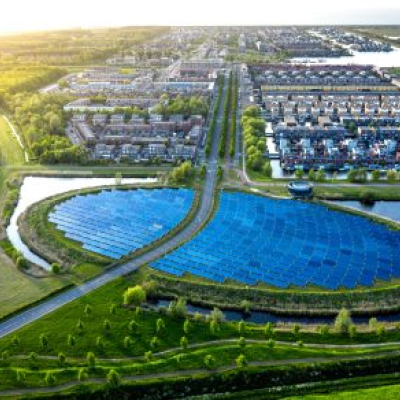@media (max-width: 1333px) { .mobile-img { margin-left:0px !important; } .mobile-video { margin-right: 0px !important; } .mobile-quote, .mobile-table { display:none; } } .drop-cap { font-size: 6em; float: left; line-height: 75px; padding-right: 8px; padding-left: 0; } .drop-cap-2 { font-size: 3em; float: left; line-height: 35px; padding-left: 0; }
The Larger than Tigers report, released by the European Commission in May, presents a synthesis of the challenges facing biodiversity across Asia and looks at initiatives put in place to help in its conservation. Lead author Pete Wood walked us through some of the report’s findings.
Capacity4Dev (C4D): Why is a regional focus on Asia needed in conservation?
Pete Wood (PW): The EU, in its development work, has a very strong focus on Asia. If you combine marine and terrestrial species, Asia presents the greatest concentration of biological diversity on the planet, but faces some of the most intense economic pressures. It is this combination that makes the region of special importance for conservation.
There’s a very long list of threats, the obvious ones being logging, pollution, invasive species, disease and clearing of forests for agricultural plantations, mining and towns.
But one of the most important drivers of ecological degradation in Asia has been, ironically, its fantastic economic success over the last two, three decades. This has resulted in population growth, very rapid urbanisation and more affluent populations putting pressure on resources through demand for energy, water, food and medicines, among other things.
So, you’ve got this huge success in increasing people’s welfare and taking them out of poverty, but severe consequences for the environment. The fear is that this isn’t a one way process, it’s kind of a feedback loop. If you damage the environment, you’re damaging the ability of the environment to support future economic development, ultimately undermining the progress that has been made or creating new problems.
“One of the most important drivers of ecological degradation in Asia has been, ironically, its fantastic economic success.”
C4D: While researching for the report, did you identify any major successful approaches to conservation?
PW: There’s no doubt that protected areas have helped to stem the tide of habitat and species loss, and the region has some of the world’s most spectacular species and landscapes within them. There are lots of challenges, some of them coming from lack of consultation when the protected area was set up, lack of political support, and failure to accommodate the problems that these areas might create for local people.
However, there are increasingly success stories where protected area managers have been able to negotiate management that accommodates local needs without compromising the objectives of biodiversity conservation.
There has been particular progress in marine conservation, where it has been possible to show local people and decision makers that combining conservation with sustainable fisheries leads to healthier reefs and more productive fisheries. Since we have the world’s richest coral reefs in the region, that’s critical for conservation.
The other area where there have been some important wins is in the battle against the illegal wildlife trade, which is decimating the region’s species. Tackling this problem has been difficult, because these are really quite sophisticated criminal networks. If you start cracking down in one particular area, then the smuggling routes change, or the product or the source changes. [Smugglers] will find a way to keep going with the trade.

The population of the Bornean orangutan, one of the animals featured in the report, has declined sharply as a result of forest loss, hunting and fires.
International cooperation and data sharing – things you sometimes think were simple, such as keeping information in a common format so that it can be shared – have resulted in some major seizures of wildlife products, and we are starting to see some prosecutions of not just the ‘little guys’ who are caught red-handed, but also the organisers who are taking the profits from the trade.
Tackling the illegal trade is also about changing the demand for products. A number of years ago there was some interesting work showing that many Chinese consumers of ivory had no idea that you had to kill an elephant in order to obtain it. Once that message got out, people started to care more about it. You can also do that for pangolins and all kinds of other species – that’s one of the successes.
C4D: Have you seen any approaches that could be leveraged across contexts?
PW: One of the approaches to conservation that’s starting to be adopted quite widely is called the SMART [Spatial Monitoring and Reporting Tool] approach. The approach uses remote sensing and satellite images to look at a protected area to see where the pressure points are, where illegal logging is happening, and where there’s evidence of roads or intrusion. You combine that with field data coming in from the rangers, villages or any informants you have on the ground, and that allows you to target your resources and efforts on the most important areas.
We’ve got fabulous protected areas in Asia and almost none of them have enough resources to do their job. So using scarce resources efficiently is absolute critical, and the SMART approach allows protected area managers to really focus on the area’s most in need.
SMART has so far been used in 11 of the 25 countries we cover in the new report. I think it will get rolled out in many more – I know that many countries are interested in using it.
“We’ve got fabulous protected areas in Asia and almost none of them have enough resources to do their job.”
C4D: What do you hope will be the impact of the new report?
PW: The hope is that it stimulates more action. There’s money for conservation, but this is absolutely tiny compared to the money in circulation that can negatively affect the environment through trade and demand.
So, just as important as increasing the amount of money for conservation is influencing how businesses are doing their work and how they’re influencing how governments are deciding to spend their budgets. We hope these reports might go a little way towards pushing that agenda along.
In a region that’s so diverse, you can’t make very specific recommendations. We’re conscious that what is going to have to happen now is that within each country, they’re going to have to take the report and look at their own needs and opportunities. My hope is that it’s at least a useful reference for people to start these discussions and move forward with plans.

Waste from electronic products, China. The 25 countries covered by the report will be home to around 5.5 billion people in 2050, putting an even greater strain on the region's natural environment.
I know that the last report – Larger than Elephants – which focused on Africa, has been used to influence EU funding. In Africa that’s been possible because the EU has a lot of direct bilateral relationship with African countries, and so in that context the EU is directly programming what it’s going to do in a specific country.
Larger than Tigers is different. In Asia, because so many more economies are already developed, the EU has fewer bilateral relationships and works more on a regional level. Things like the relationship between the EU and the Association of Southeast Asian Nations (ASEAN) are really important, and ASEAN already has an agenda on sustainability and the wildlife trade that the EU can support.
C4D: What does the future hold for Asia in terms of conservation?
PW: Population models say the population of China will start to decline around 2050 – it will get overtaken by the population of India sometime before then. Levelling off is going to happen at different times for different countries – but of course, it isn’t just about numbers, it’s about how much these people consume in terms of their use of energy, water, food and so on.
Being able to satisfy the needs of these people in a sustainable way is going to be critical. Are we making progress towards it? Yes, definitely. China is by far the biggest user of solar power; there are massive renewable energy schemes in different countries in Asia.
Countries in central Asia – like Kazakhstan, for example – have an incredible potential for wind power, which they’re starting to exploit now. A lot of them are starting to make this leap, going from having been relatively poor countries a few decades ago to rapidly adopting new technologies.
“The way that civil society works together across the globe is changing, and I think that’s incredibly positive.”
There are also causes for optimism in the way people are engaging with environment. In all the countries where civil society is relatively free to operate, we’ve seen a huge growth in the number of civil society organisations, including those concerned with the environment.
Whereas European NGOs used to lead the conservation efforts in these countries, that’s no longer the case in most of them. Now, it’s mostly local organisations finding their own ways that are much more culturally appropriate, while looking to their Western counterparts for technical support, funding and international policy agendas. The way that civil society works together across the globe is changing, and I think that’s incredibly positive.
And, similarly, all of this relies on knowledge and data. We’re gradually discovering more and more about species, about their roles in ecosystem, what affects them, how they’re going to be affected by climate change, and what we need to do to ensure that both they and their ecosystems survive. Importantly, more and more of this work is being done by Asian research institutions and universities.
Asia has the most extraordinary diversity of human cultures and traditions and languages, existing in an enormous variety of ecosystems. While it’s possible to generalise about the main problems, and to share lessons on the possible solutions, each situation will be different, and the challenge for conservation is to be able to build on that richness and take it into account and find local solutions that work in particular places.







Log in with your EU Login account to post or comment on the platform.